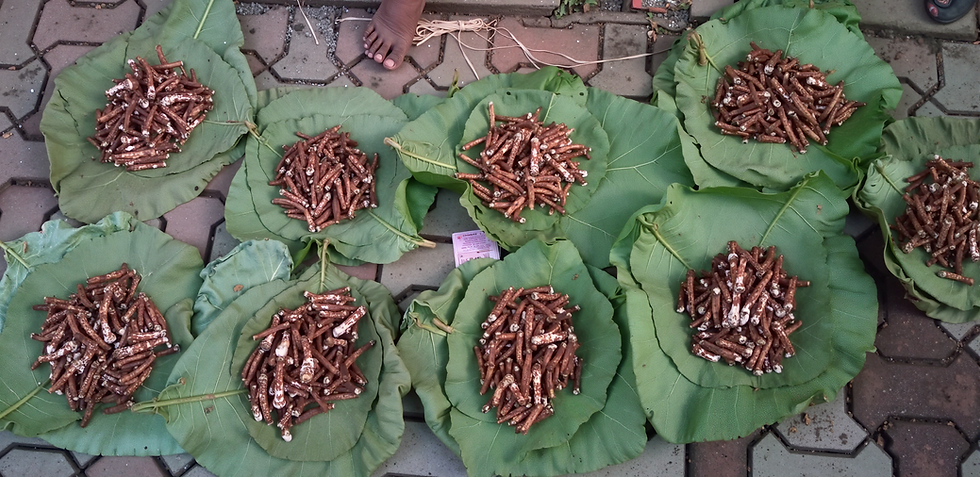Aldona: Where the Mandovi Whispers Tales of Portugal
- Whispering Cafe & Store

- Mar 15
- 3 min read
Imagine a serene village nestled along the meandering banks of the Mandovi River, where the echoes of a bygone era still resonate in the gentle breeze. This is Aldona, Goa, a place where the vibrant tapestry of Indian culture is intricately interwoven with the threads of Portuguese history. For centuries, Aldona, like the rest of Goa, lived under Portuguese rule, a period that left an indelible mark on its daily life, architecture, language, and cherished traditions. Let's embark on a journey back in time and explore how this unique cultural blend shaped the Aldona we see today.

A Day in the Life: Echoes of the Past:
During the Portuguese era, Goan society was structured in a distinct hierarchy. Europeans held the highest positions, followed by local converts to Christianity, and then the majority Hindu population. Picture the daily routines: the melodic sounds of Konkani intermingling with the cadence of Portuguese, the sight of traditional Goan attire alongside European fashions, and the tantalizing aroma of native spices blending with newly introduced ingredients. While the Portuguese actively sought to impose their culture and religion, especially after the introduction of the Inquisition, the enduring resilience of local customs ensured a fascinating fusion.
Life in Aldona, as in other Goan villages, saw the integration of Portuguese architectural styles. Houses began to feature inviting porches and distinctive Mangalore tile roofs, often constructed with locally sourced laterite stone. However, only churches were permitted to be painted white, creating a striking visual distinction. Food also underwent a culinary transformation, with new ingredients like chilies, potatoes, and pineapples introduced, leading to iconic dishes like vindaloo (derived from the Portuguese vinha d'alhos).

Aldona's Historical Landmarks: Stories Etched in Stone:
Aldona, once a bustling trading port known as Haldona, holds historical gems that narrate captivating tales of its past. The Sao Tome Church, erected in 1596, stands as a testament to the distinctive Goan-Portuguese architectural style, with its pristine white façade and intricately detailed interiors. Legend has it that the villagers bravely defended this cherished church from thieves, an event commemorated annually in the vibrant "Choranchem Fest" (Feast of the Thieves).

Nearby, Corjuem Fort, constructed in 1705, served as a crucial defensive outpost, particularly against Maratha invasions. Its sturdy laterite stone walls and strategic location offered panoramic views, safeguarding the surrounding region. Smaller fortifications on Ponolem Island and in Quitula acted as vital signaling points, alerting villagers to approaching threats.
Terçena, a location within Aldona, once housed a Portuguese garrison, evidence of the village's strategic importance. The garrison faced attacks from the Bhonsles, highlighting the turbulent times of the era.

Language and Culture: A Lingua Franca of Fusion:
The Portuguese influence is most profoundly evident in the Konkani language. Words related to family, religion, food, and everyday life were seamlessly adopted, creating a unique linguistic blend. You'll hear words like Aamen (Amen), Padri (priest), Avô (grandfather), Arroz (rice), and Janela (window) seamlessly integrated into Konkani conversations. A distinct "Konkani Portuguese" dialect emerged, and the Roman script was even used to write Konkani, showcasing a profound linguistic impact.
Culturally, Aldona, like the rest of Goa, is a vibrant melting pot. The Goan-Portuguese architectural style, exemplified by the Sao Tome Church, is a prime example. Cuisine, with its harmonious blend of Indian spices and Portuguese ingredients, is another. Social customs and traditions also reflect this fascinating fusion, creating a unique Goan identity.

The Enduring Legacy:
Today, as you stroll through the tranquil lanes of Aldona, you can still feel the echoes of its Portuguese past. The architecture, the language, the food, and the traditions all bear witness to this fascinating blend of cultures. While Portuguese rule has long since ended, its legacy lives on, making Aldona a captivating destination for those seeking to understand the unique cultural tapestry of Goa.

Have you had the pleasure of visiting Aldona? What aspects of its Portuguese heritage did you find most intriguing? Share your thoughts and experiences in the comments below!
You can also book a stay at our Boutique B&B Nestled amidst lush greenery in Aldona and experience this beautiful village first hand. The beautifully restored 240-year-old Portuguese house offers a sanctuary for the soul. Our accommodations boast stunning traditional architecture with interiors inspired by its rich history. Enjoy breathtaking garden views from your room while you relax in the tranquility of our lush surroundings. With three unique room options to choose from, enjoy the included breakfast and access to our charming cafe, vibrant bar, and the opportunity to participate in our exciting monthly events.






Comments